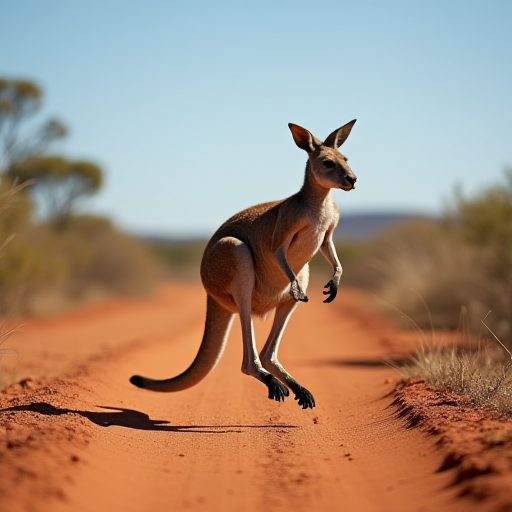
Why Do Kangaroos Hop?
Kangaroos are one of the most iconic animals of Australia, instantly recognizable by their unique mode of locomotion—hopping. This distinctive movement not only defines their identity but also raises intriguing questions about its evolutionary advantages and physiological mechanisms. In this article, we will delve into the reasons why kangaroos hop, exploring the anatomical, evolutionary, and ecological factors that contribute to this fascinating behavior.
Anatomical Adaptations for Hopping
Powerful Hind Limbs
One of the primary reasons kangaroos are able to hop is due to their powerful hind limbs. These limbs are long, muscular, and designed specifically for this mode of movement. The large tendons in the legs, particularly the Achilles tendons, act like springs. When a kangaroo lands, these tendons stretch and store energy. As the kangaroo lifts off again, the stored energy is released, propelling the animal forward. This elastic energy storage is a key factor in making hopping an energy-efficient means of travel.
Tail as a Counterbalance
Kangaroos also possess a strong, muscular tail that plays a crucial role in their hopping. The tail acts as a counterbalance, helping them maintain stability and direction as they move. Additionally, the tail can act as a third leg when kangaroos are moving slowly or when they are standing still, providing support and balance.
Unique Musculoskeletal Structure
The musculoskeletal structure of a kangaroo is uniquely adapted for hopping. Their pelvis is angled in a way that allows for powerful forward thrusts, and the alignment of their legs allows them to exert force efficiently. This structure minimizes energy loss and maximizes the propulsion generated with each hop.
Evolutionary Advantages of Hopping
Energy Efficiency
Hopping is an energy-efficient form of locomotion, particularly over long distances. For kangaroos, which inhabit the vast open spaces of Australia, the ability to travel efficiently is crucial for survival. Hopping at high speeds allows them to cover large areas in search of food and water with minimal energy expenditure. Research has shown that kangaroos can maintain a steady pace over long distances while using less energy compared to walking or running.
Speed and Evasion
Hopping also allows kangaroos to reach high speeds quickly, which is essential for evading predators. In the wild, the ability to escape threats swiftly can mean the difference between life and death. The speed and agility provided by hopping give kangaroos a significant advantage over potential predators.
Adaptation to Environment
The Australian landscape, characterized by open plains and sparse vegetation, is ideally suited for a hopping animal. The terrain allows kangaroos to move quickly and efficiently, accessing scattered food resources. This mode of locomotion has evolved in response to the environmental conditions, making hopping kangaroos perfectly adapted to their habitat.
Ecological and Behavioral Considerations
Social Dynamics
Kangaroos are social animals and are often seen in groups known as mobs. Hopping allows them to keep pace with one another easily, facilitating group movement across the landscape. This social aspect of their behavior is supported by their locomotion, as it allows them to maintain social bonds and protect one another from predators.
Foraging and Resource Allocation
Hopping enables kangaroos to cover vast areas in search of food, which is especially important in arid environments where vegetation can be scarce and patchily distributed. By being able to travel long distances efficiently, kangaroos can access a wider range of food sources and better manage their energy reserves.
Conclusion
The hopping of kangaroos is a remarkable example of evolutionary adaptation, shaped by anatomical, ecological, and environmental factors. This form of locomotion offers numerous advantages, from energy efficiency and speed to social and foraging benefits. Understanding why kangaroos hop provides insight into the intricate ways in which animals evolve to thrive in their environments. As we continue to study these fascinating marsupials, we gain a deeper appreciation for the complex interplay between form, function, and survival in the natural world.
